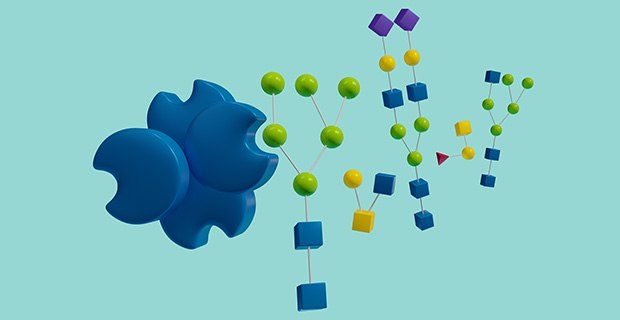Lectin Selection Guide: A Useful Guide for Selecting the Right Lectin
Need a lectin for your research but aren’t sure which one to choose? Explore our lectin selection guide, conveniently organized by lectin source/species, carbohydrate specificity, and more to find the right lectin for your research.

What Are Lectins?
Lectins are proteins or glycoproteins from non-immune origins that are known to bind to specific carbohydrate structures. They agglutinate cells and/or precipitate complex carbohydrates. Lectins are isolated from a wide variety of natural sources, both plant and animal. Recombinant human and rat galectins are expressed in Escherichia coli. The agglutination activity of these highly specific carbohydrate-binding molecules is usually inhibited by a simple monosaccharide, but for some lectins di-, tri-, and even polysaccharides are required.
Lectin Selection Guide
Lectins have unique carbohydrate specificities and can be used for various applications, such as cell surface labeling, glycoprotein purification, and carbohydrate analysis. Our lectin product line includes lectins from various sources such as plants, bacteria, and animals. These proteins have a wide range of biological activities such as mitogenic and agglutinating activities on certain cell types, making them useful for many different research areas.
In this lectin selection guide, we present various lectins along with their specific carbohydrate recognition specificities, mitogenic and agglutinating activities for certain cell types, and recommended applications. This comprehensive guide will aid in the selection of the most suitable lectin for your research needs.
Please click on your lectin source below to find tables detailing differences in the lectins and their specific properties.
- Arachis hypogaea (peanut)
- Artocarpus heterophyllus (jackfruit)
- Bandeiraea simplicifolia (Griffonia simplicifolia)
- Canavalia ensiformis (jack bean)
- Dolichos biflorus (horse gram)
- Erythrina cristagalli (coral tree)
- Galanthus nivalis (snowdrop)
- Glycine max (soybean)
- Helix pomatia (snail)
- Homo sapiens
- Lens culinaris (lentil)
- Lycopersicon esculentum (tomato)
- Phaseolus vulgaris (red kidney bean)
- Phytolacca americana (pokeweed)
- Pisum sativum (pea)
- Pseudomonas aeruginosa
- Triticum vulgaris (wheat germ)
- Ulex europaeus (gorse, furze)
- Wisteria floribunda
You can also download the full selection guide.
You can find the footnotes and references denoted in the tables at the end of the page.
Footnotes
- Mitogenic for neuraminidase-treated lymphocytes
- Inhibits mitogenic activity of PHA
- Non-agglutinating and mitogenic
- More rare, only for specific structures; See references for more detail
- Isolectin B4 enriched for specificity against Blood Type B, but some Type A agglutination activity may be present
- Agglutinates neuraminidase-treated O-type RBCs
- Stronger binding to Forssman antigen than blood group A
- Has anti-mitogenic activity
- If empty, lectin may have agglutinating activities, but may not be characterized or is not specific to erythrocytes or leukocytes
- Not considered mitogenic, but will induce cytokine production
References
如要继续阅读,请登录或创建帐户。
暂无帐户?